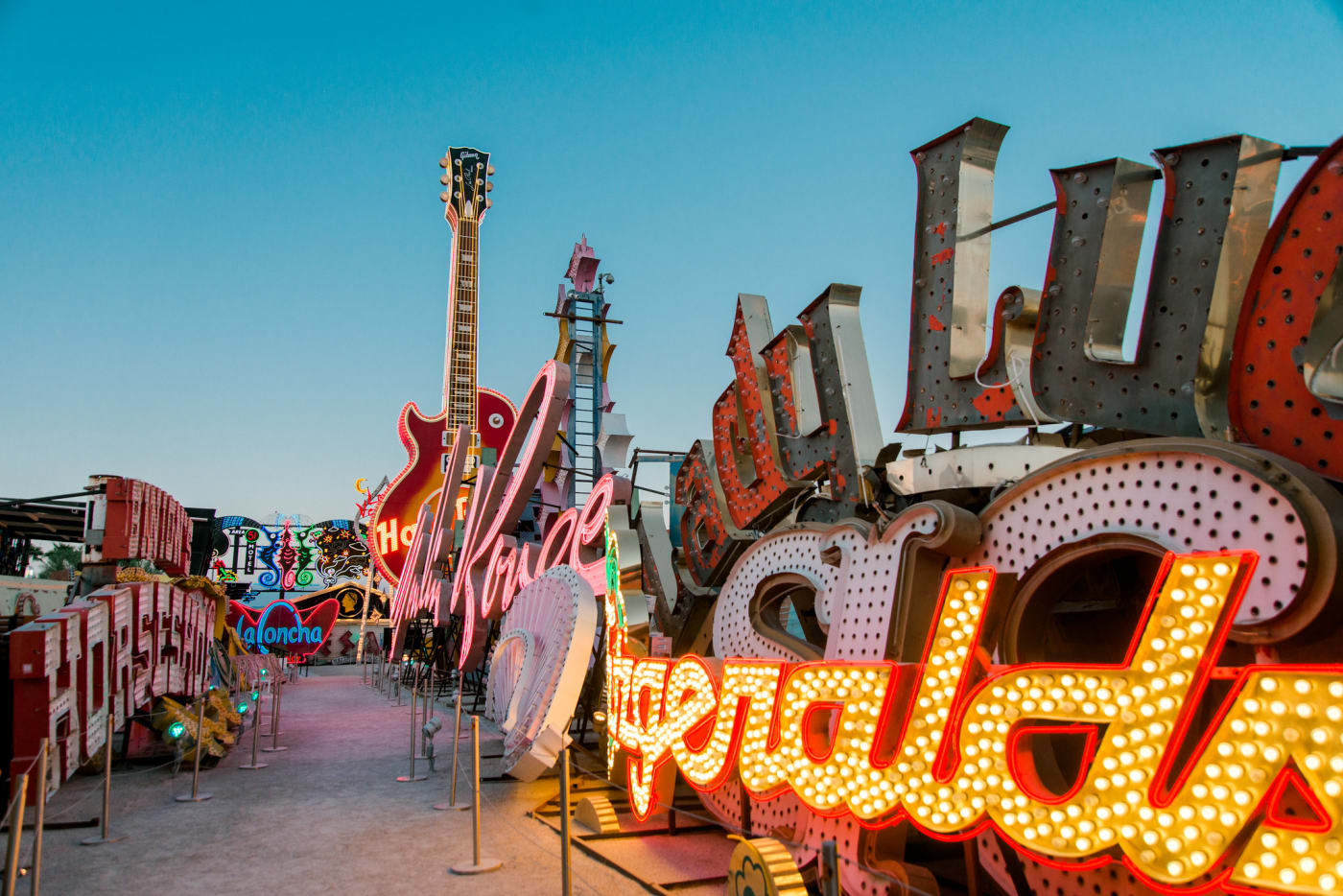Golden Nugget Las Vegas Hotel & Casino

Please position yourself near the Golden Nugget Hotel & Casino’s “1905” signage.
Entrepreneur Steve Wynn referred to the introduction of natural light and greenery at his properties as his “special sauce,” which he first began to experiment with during his ownership of the Golden Nugget Hotel & Casino in downtown Las Vegas in the 1980s. Wynn and his team of designers transformed the property from an Old West design imagined by YESCO (Young Electric Sign Company) artist Kermit Wayne to something more elegant, featuring white marble and gold lighting. The Golden Nugget had previously been a “decorated shed” whose unremarkable architecture was decorated with ornamental signage. Wynn help shift the property from a prototypical casino—designed to be brash, dark, and disorienting—to something more inviting and natural. Historically, previous casinos in Las Vegas were believed to use disorientation of time and place to their financial benefit. While there are no conclusive studies to support that hypothesis, many unexpected factors have arisen that influence human behavior on the casino floor, such as scent, music, light, and people traffic.
The concept of biophilia was first proposed in the 1980s, and refers to the tendency of humans to interact with nature. In a design context, biophilia describes architecture and urban planning that integrate natural elements to promote wellbeing. Wynn’s Bellagio Hotel & Casino was among Las Vegas’ first fully biophilic casinos, incorporating natural light through smart designed glass ceilings. Wynn continued this trend with his Wynn and Encore properties in subsequent years, prominently featuring greenery, flowers, and water features to create immersive, whimsical indoor spaces.








